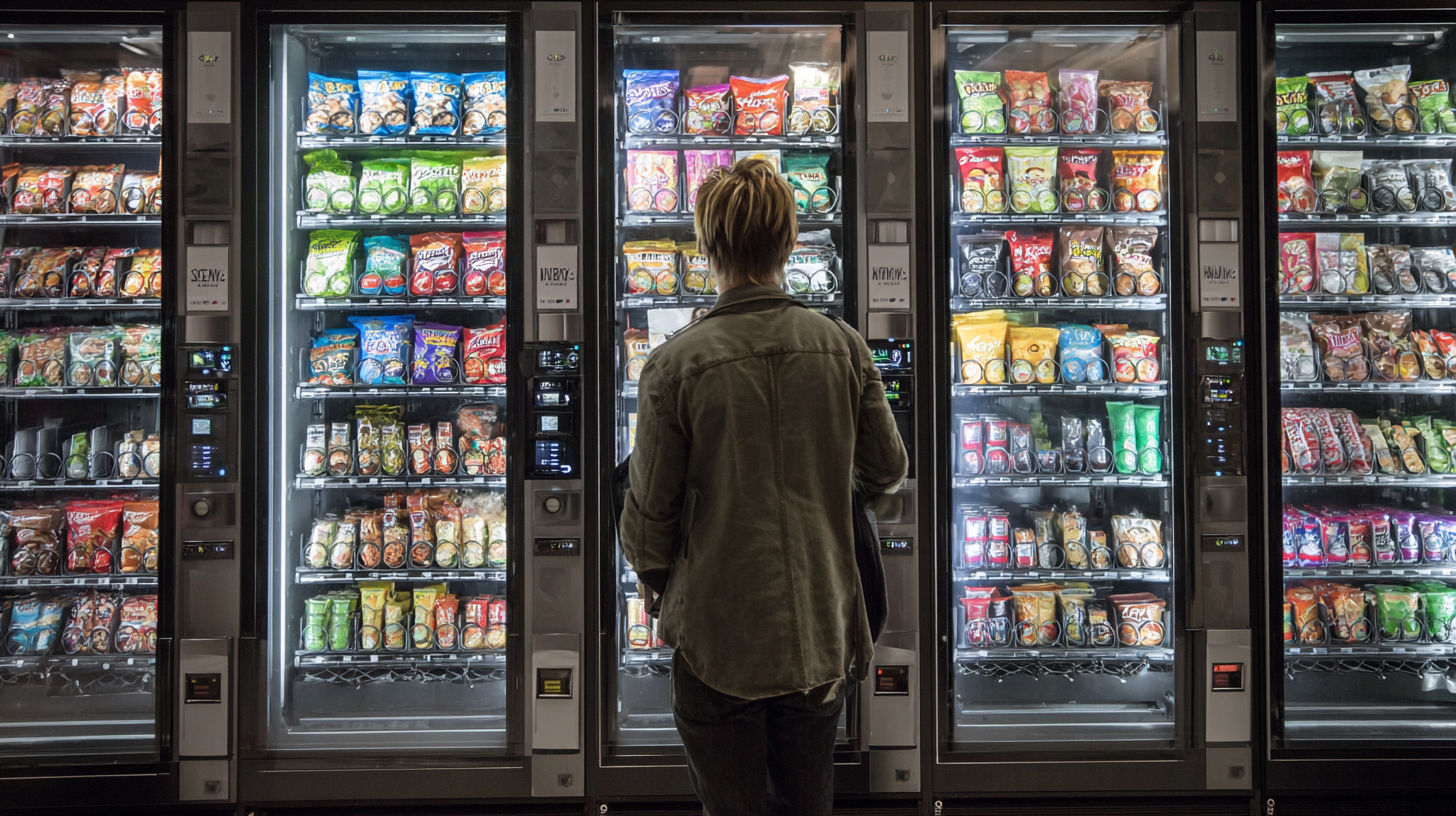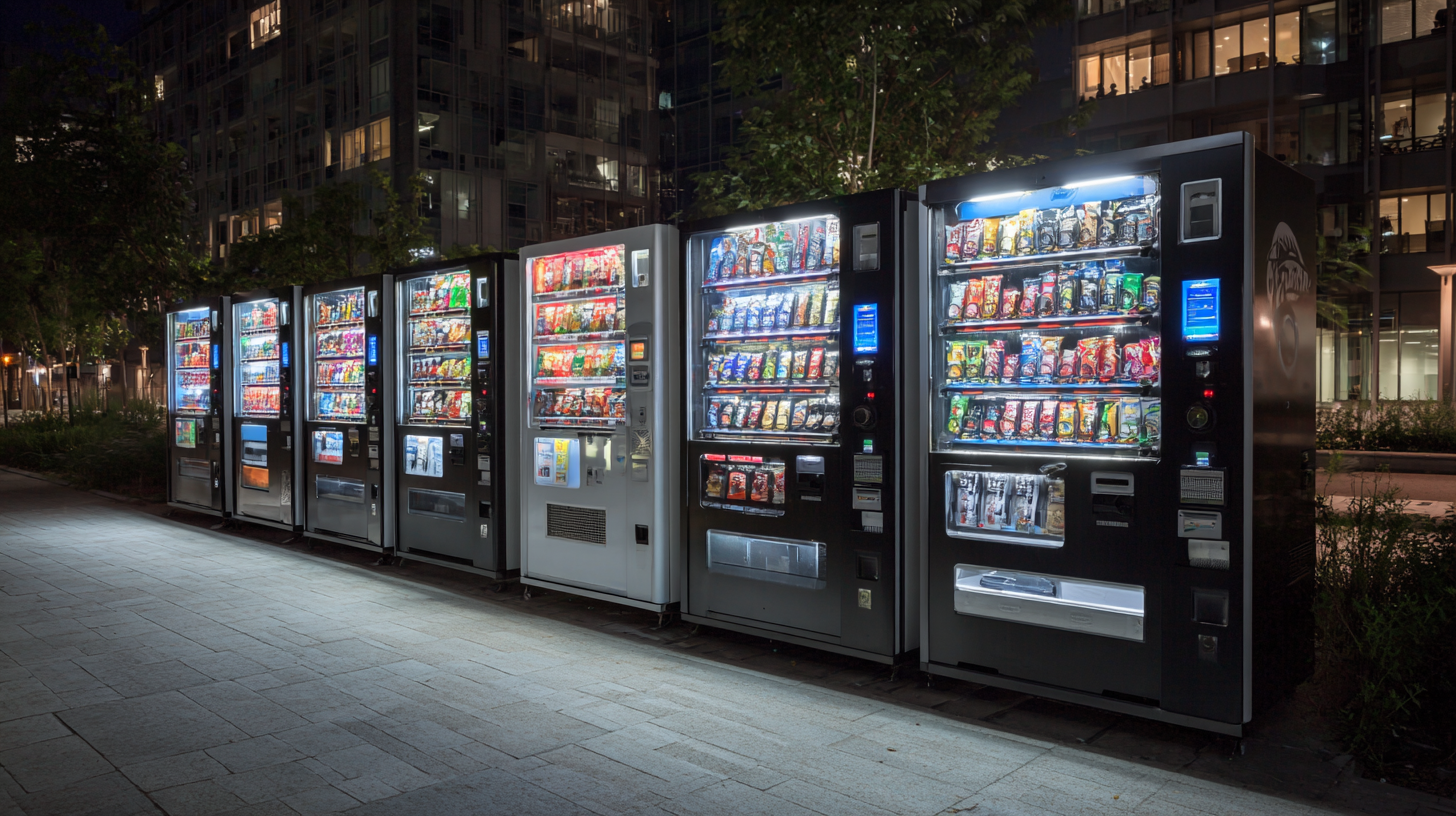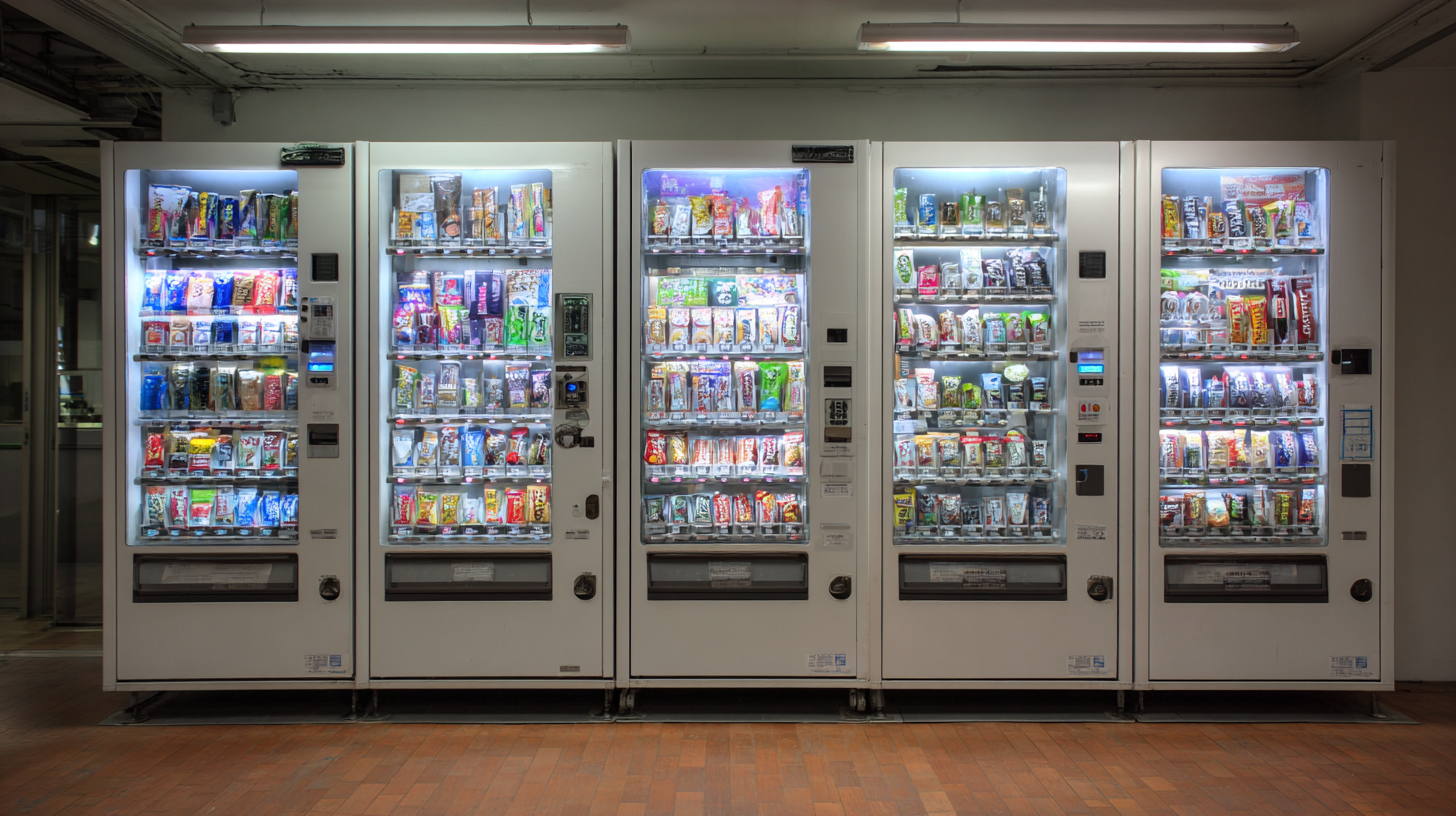Menu
Contact Us: 416.615.1555 | sale@booksvendingmachine.com
Menu
Contact Us: 416.615.1555 | sale@booksvendingmachine.com
The advent of food vending machines has significantly transformed the landscape of snack accessibility, catering to the ever-evolving demands of consumers and their busy lifestyles. According to a recent report by IBISWorld, the vending machine industry in the United States alone is projected to reach $28 billion by 2024, driven in part by the increasing demand for convenient and on-the-go food options. With advancements in technology, modern food vending machines offer a range of products from healthy snacks to gourmet meals, thereby appealing to diverse consumer preferences. Additionally, a study from Grand View Research highlights that the global vending machine market is expected to grow at a CAGR of 9.6% from 2021 to 2028. This growth indicates not only a shift in consumer behavior towards more accessible food options but also signifies a broader trend of innovation within the food service industry, where food vending machines play a pivotal role in enhancing snack availability for all.

Food vending machines have undergone a remarkable evolution, rooted in centuries of innovation. Historically, the concept of vending can be traced back to ancient Greece, where coin-operated machines dispensed holy water in temples. Fast forward to the 19th century, vending machines began to flourish in urban settings, providing snacks and beverages to the masses. Today, the advanced designs of these machines are equipped with smart technology, offering a wide range of products from snacks to electronics, making them more versatile than ever.
One notable trend is the introduction of niche vending options that cater to specific demographics and locations, enhancing users’ experiences. For instance, kiosks are now popping up in travel hotspots, offering curated selections that resonate with travelers. Additionally, data shows that vending machine sales hit approximately $23 billion in the United States in 2022, reflecting a steady growth trajectory driven by convenience and accessibility.
**Tips:**
- Ensure you choose vending machines that offer a variety of healthy options to meet diverse dietary needs.
- Look for machines equipped with contactless payment systems for a quicker and safer transaction experience.
- Consider the placement of vending machines—they work best where foot traffic is high, such as schools, hospitals, and public transit stations.
Food vending machines have evolved dramatically over the years, transforming from simple coin-operated boxes into sophisticated technological marvels. These modern machines not only offer a vast array of snacks but also enhance user experience through advanced technology. Features like touchless payment options, interactive screens, and real-time inventory tracking ensure that customers enjoy a seamless and convenient vending experience.
When using a food vending machine, consider these tips for a better experience: first, familiarize yourself with the machine’s interface; many now come with user-friendly touchscreens that provide easy navigation and detailed product information. Second, take a moment to check for any special offers or promotions that the machine may have, as many are programmed to highlight discounts or combo deals. Lastly, always pay attention to the expiration dates displayed; modern machines often showcase the freshness of their products to help you make informed choices.
The integration of technology in vending machines not only makes snacks easier to access but also personalizes the shopping experience. For instance, some machines utilize data analytics to understand customer preferences, enabling them to stock popular items more frequently while offering suggestions based on past purchases. This level of customization enhances the convenience factor, making it easier than ever for snack lovers to find their favorite treats on the go.
Food vending machines have evolved beyond traditional snacks to cater to a wide array of dietary needs, offering a healthier and more diverse selection for consumers. These machines now feature items such as gluten-free snacks, protein bars, organic options, and even vegan meals, making it easier for people to find food that aligns with their personal dietary restrictions and lifestyle choices. By placing these machines in schools, offices, and public areas, access to nutritious snacks has significantly improved, encouraging healthier eating habits.
Tips: When selecting snacks from vending machines, look for options that are labeled as low in sugar or high in protein. Additionally, consider portion sizes to manage intake and choose whole food items whenever possible. This way, you can enjoy the convenience of vending while ensuring you're making healthier choices.
The innovation in food vending machines not only addresses the demand for healthier options but also adds variety, allowing consumers to explore different flavors and cuisines. For those with specific dietary requirements, these machines provide a much-needed solution, making it simpler to enjoy on-the-go snacks without compromising their dietary needs. Whether you're seeking energy-boosting snacks or simply trying to eat better, the evolving landscape of vending machines is paving the way for a more accessible and health-conscious snacking experience.

Smart vending machines are transforming the way people access snacks, making them more convenient and efficient than ever before. Equipped with advanced technology, these machines offer a variety of features that enhance user experience. For instance, contactless payment options allow for quick transactions, while touchless interfaces ensure hygiene and ease of use. Furthermore, many modern vending machines are connected to the internet, enabling companies to monitor stock levels in real-time and provide customers with accurate inventory information.

The global smart vending machine market is forecasted to grow significantly, from $11.47 billion in 2025 to $36.89 billion by 2032, reflecting an impressive annual growth rate of 18.2%. This rapid expansion is driven by increasing consumer demand for healthier snack options and the integration of smart technologies. Machines equipped with digital screens can display nutritional information and promote healthier choices, catering to the growing trend of health-conscious consumers. As smart vending machines continue to innovate, they play a pivotal role in bolstering snack accessibility, reshaping the food retail landscape.
Food vending machines are undergoing a significant transformation, shaped by emerging trends in snack consumption that cater to evolving consumer preferences. According to a report by IBISWorld, the food vending machine industry is projected to grow by 5.2% annually, driven largely by the increasing demand for healthier snack options. Consumers are now seeking convenient, yet nutritious choices, prompting manufacturers to innovate their selections. From gluten-free snacks to high-protein options, vending machines are being stocked with items that reflect a shift toward health-conscious eating.
Furthermore, the integration of technology in vending machines is revolutionizing the user experience. The rise of cashless payments and mobile ordering has changed how consumers interact with these machines. As highlighted by a Market Research Future report, the smart vending machine market is expected to reach $6.68 billion by 2025, with features like touchscreen interfaces and inventory tracking systems. These advancements not only enhance snack accessibility but also provide operators with valuable data on consumer preferences, allowing for more strategic stocking and menu designs. This convergence of health trends and technological innovation is setting the stage for a new era in snack consumption through vending machines.





